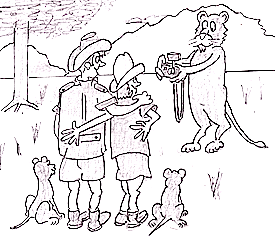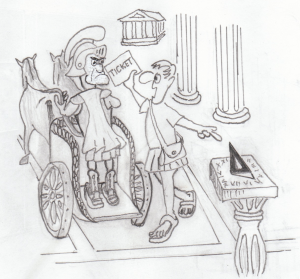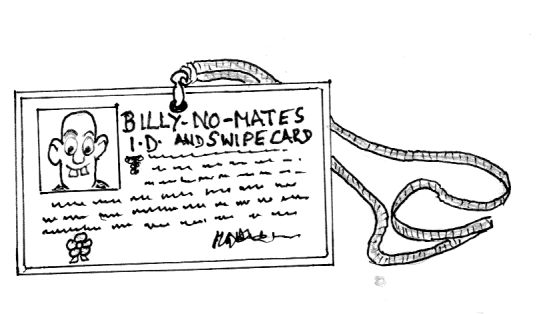Always getting approached by foreign tourists and being asked take pictures of them with their own cameras
 The fashion for including oneself in one’s own pictures has been ongoing since the 15th century and can be traced back to an incident in Padua one day at the height of the Italian Renaissance when the master-painter Stefano Scrotelli happened to be in the piazza painting the cathedral , says Quot’s artman, Melchior Cheese . Such was the resurgence of Art at the time that it was almost impossible even to shake out one’s brushes without sploshing another artist and a certain young apprentice Giorgio Bernardini who happened to be passing asked the Master whether he’d like to be in his own picture and offered to paint him in . Quite taken with the idea the Master handed over his brushes and paints and stepped out in front of his easel and adopted a posing position. Other great painters soon followed suit and surrendered their materials to inferior artists in exchange for their moment in the limelight . That was until they started making off with their paints during the Great Pigment Drought of 1537 – but the groundwork for what was superseded by time-lapse portrait photography had been laid . Thus many great masters found their way into their own paintings and so deft did the art-touts become at knocking off fast-action portraiture that they found they could make a living at it by expanding their clientele to include wealthy visitors who stopped to admire the pre-painted background . So fast did they become that sometimes they did not ask their subjects to pose but immortalized them doing whatever they happened to be doing at the time (and with whomever they happened to be doing it ) and selling the pictures to their subjects afterwards. Thus was born one of the great legacies to modern times of the Italian Renaissance – the Paparazzi .
The fashion for including oneself in one’s own pictures has been ongoing since the 15th century and can be traced back to an incident in Padua one day at the height of the Italian Renaissance when the master-painter Stefano Scrotelli happened to be in the piazza painting the cathedral , says Quot’s artman, Melchior Cheese . Such was the resurgence of Art at the time that it was almost impossible even to shake out one’s brushes without sploshing another artist and a certain young apprentice Giorgio Bernardini who happened to be passing asked the Master whether he’d like to be in his own picture and offered to paint him in . Quite taken with the idea the Master handed over his brushes and paints and stepped out in front of his easel and adopted a posing position. Other great painters soon followed suit and surrendered their materials to inferior artists in exchange for their moment in the limelight . That was until they started making off with their paints during the Great Pigment Drought of 1537 – but the groundwork for what was superseded by time-lapse portrait photography had been laid . Thus many great masters found their way into their own paintings and so deft did the art-touts become at knocking off fast-action portraiture that they found they could make a living at it by expanding their clientele to include wealthy visitors who stopped to admire the pre-painted background . So fast did they become that sometimes they did not ask their subjects to pose but immortalized them doing whatever they happened to be doing at the time (and with whomever they happened to be doing it ) and selling the pictures to their subjects afterwards. Thus was born one of the great legacies to modern times of the Italian Renaissance – the Paparazzi .
(Gordon Brittle , London SW5) - QQQ**

